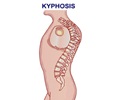Older men with prior fracture may find it cost effective to avail screening and treatment for Osteoporosis, according to a study in the August 8 issue of JAMA.
Older men with prior fracture may find it cost effective to avail screening and treatment for Osteoporosis, according to a study in the August 8 issue of JAMA.
White men over the age of 60 have a 29 percent chance of having an oestoporotic fracture in their remaining life time as this kind of fracture is a quite common and serious health problem among the elderly men. One third of the hip fractures happen to men compared to women and these fractures are also responsible for various illness and deaths in men. In spite of the seriousness of the problem there is a lack of evidence regarding the cost-effectiveness of common diagnostic and therapeutic interventions.John T. Schousboe, M.D., M.S., of Park Nicollet Health Services, Minneapolis, and colleagues conducted a study to estimate the lifetime costs and health benefits of bone densitometry (measurement of bone density) followed by 5 years of oral bisphosphonate (a class of drugs used to strengthen bone) therapy for men found to have osteoporosis. The researchers created a computer simulation model for hypothetical groups of white men age 65, 70, 75, 80, or 85 years, with or without prior clinical fracture.
Data from several sources were used to estimate fracture costs and population-based age-specific fracture rates and associations among prior fractures, bone density and incident fractures. The authors estimated the costs per quality-adjusted life-years (QALYs) gained for the densitometry and follow-up treatment strategy compared with no intervention, calculated from lifetime costs and accumulated QALYs for each strategy.
The researchers found that the estimated prevalence of femoral neck osteoporosis among men with a prior fracture ranged from 14.5 percent at age 65 years to 33.6 percent at age 85 years.
Osteoporosis prevalence in the absence of a prior clinical fracture was lower, ranging from 7.6 percent at age 65 years to 17.6 percent at age 85 years. The densitometry and treatment strategy modestly reduced the absolute 10-year incidence of clinical fractures by a range of 2.1 percent for 65-year-old men without a prior fracture to 4.5 percent among 85-year-old men with a prior fracture.
Regarding cost-effectiveness, “universal bone densitometry followed by oral bisphosphonate therapy among those found to have osteoporosis for all men aged 70 years or older regardless of fracture history or other fracture risk factors is not cost-effective using current drug costs.
Advertisement
Source-Eurekalert
BIN/J











